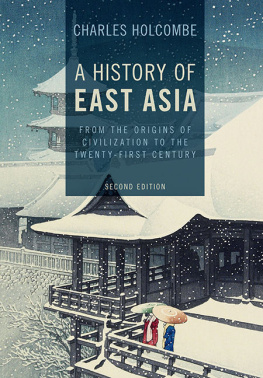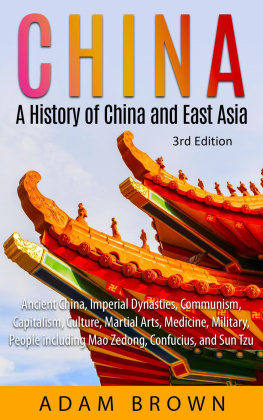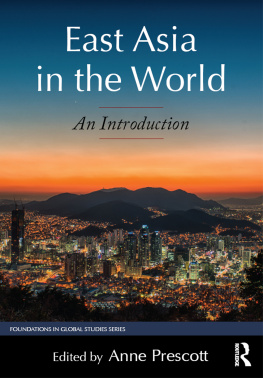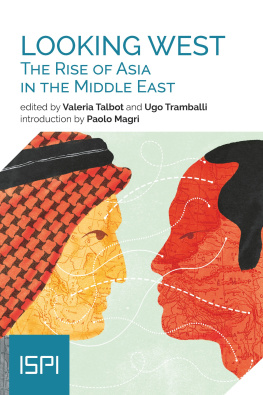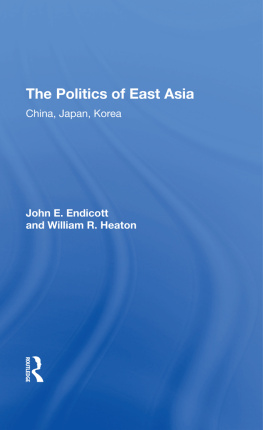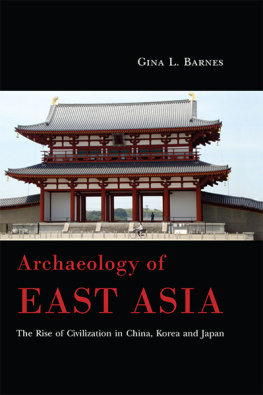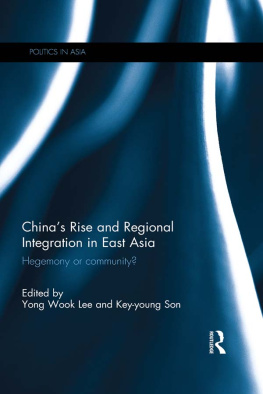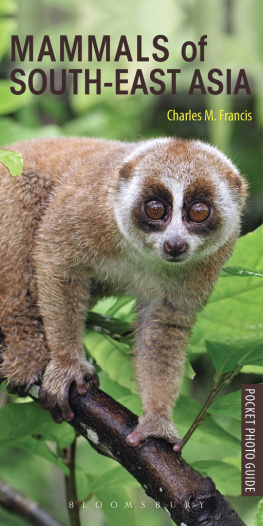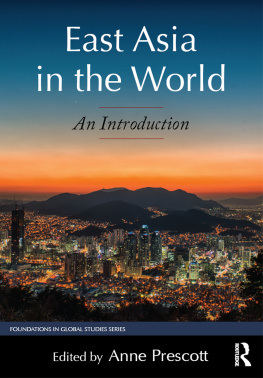Charles Holcombe begins by asking the question What is East Asia? In the modern age, many of the features that made the region now defined as including China, Japan, Korea, and Vietnam distinct have been submerged by the effects of revolution, politics, or globalization. Yet, as an ancient civilization, the region had both a historical and cultural coherence. This shared past is at the heart of this extraordinarily ambitious book, which traces the story of East Asia from the dawn of history to the twenty-first century. The second edition has been imaginatively revised and expanded to include an added emphasis on cross-cultural interactions and connections, both within East Asia and beyond, new chapters on Vietnam, and new material on modern pop culture. The updated volume also features a Chinese character list, fourteen new illustrations, and seven new maps.
Charles Holcombe is professor of history at the University of Northern Iowa. His publications include The Genesis of East Asia, 221 BC AD 907 (2001) and In the Shadow of the Han: Literati Thought and Society at the Start of the Southern Dynasties (1994).
University Printing House, Cambridge CB2 8BS, United Kingdom
One Liberty Plaza, 20th Floor, New York, NY 10006, USA
477 Williamstown Road, Port Melbourne, VIC 3207, Australia
4843/24, 2nd Floor, Ansari Road, Daryaganj, Delhi 110002, India
79 Anson Road, #0604/06, Singapore 079906
Cambridge University Press is part of the University of Cambridge.
It furthers the Universitys mission by disseminating knowledge in the pursuit of education, learning and research at the highest international levels of excellence.
www.cambridge.org
Information on this title: www.cambridge.org/9781107118737
First edition Charles Holcombe 2011
Second edition Charles Holcombe 2017
This publication is in copyright. Subject to statutory exception and to the provisions of relevant collective licensing agreements, no reproduction of any part may take place without the written permission of Cambridge University Press.
First edition published 2011
Reprinted 2011 (twice)
Second edition published 2017
Printed in the United States of America by Sheridan Books, Inc.
A catalogue record for this publication is available from the British Library
Library of Congress Cataloguing-in-Publication Data
Names: Holcombe, Charles, 1956- author.
Title: A history of East Asia : from the origins of civilization to the twenty-first century / Charles Holcombe.
Description: Second edition. | Cambridge : Cambridge University Press, 2016. | Includes bibliographical references and index.
Identifiers: LCCN 2016025900| ISBN 9781107118737 (Hardback) | ISBN 9781107544895 (Paperback)
Subjects: LCSH: East AsiaHistory. | East AsiaCivilization.
Classification: LCC DS511 .H65 2016 | DDC 950dc23 LC record available at https://lccn.loc.gov/2016025900
ISBN 978-1-107-11873-7 Hardback
ISBN 978-1-107-54489-5 Paperback
Cambridge University Press has no responsibility for the persistence or accuracy of URLs for external or third-party internet websites referred to in this publication, and does not guarantee that any content on such websites is, or will remain, accurate or appropriate.
Contents
List of Illustrations
List of Maps
Pronunciation Guide
(Where not indicated otherwise, pronunciations are approximately as might be expected by American English speakers.)
Chinese
East Asians normally simply do not use the Roman alphabet, but for the purpose of transcribing the sounds of East Asian words in our alphabet a number of different spelling systems have been devised. For Mandarin Chinese, a spelling system called pinyin is increasingly standard. In pinyin, the vowels and diphthongs (two vowels that combine to form a single syllable) of Mandarin are pronounced approximately as follows:
a as in a h
ai like the igh in s igh or h igh
ao like the ow in h ow n ow br ow n c ow
e like the u in b u t
ei like the ay in M ay d ay
i as in pol i ce or like the ee in f ee t except in the combinations chi (where it sounds more like the chi in chi rp), ci (where it sounds more like the si in pop si cle), ri (where it sounds more like the ur in ur ban), shi (where it sounds more like the shou in shou ld), si (where it sounds more like the si in si bling), zhi (where it sounds more like the Ge in Ge rman), and zi (where it sounds more like the zi in zi ggurat)
o like the ou in ou ght
ou like oh , or the o in O klah o ma
u like the o in wh o or the oo in h oo t
Some exceptional combinations follow:
ui sounds more like oo-eigh rather than oo-ee
yan sounds like yen (rhymes with Z en ) rather than yahn
- ian (in such words as bian , lian , nian , etc.) sounds like - ee-en (as in Z en ) rather than - ee-ahn
yi sounds no different from a solitary i (as in pol i ce) in other words, the i sound in isolation, or at the beginning of a word, is by convention spelled yi
A few unusual consonants in pinyin follow:
c sounds like the ts in the Russian title Ts ar (the word cui therefore sounds like ts-oo-eigh , pronounced together quickly)
q sounds like the ch in ch ance ( Qin therefore sounds like cheen )
x sounds like hs or the s in s ee ( Xia therefore sounds like hs-ee-ah , pronounced together quickly)
zh sounds like the j in j ay ( zhou therefore sounds just like the familiar English name Joe )
Each Chinese syllable also always has a distinct tone, which is not, however, normally indicated in writing and therefore cannot be guessed from the spelling.
There are a number of alternate Chinese spelling systems still in circulation (though they are not used in this book) and several old, irregular spellings (and associated pronunciations) that have become conventionally established in English usage such as Peking for Beijing, Canton for Guangzhou, Sun Yat-sen for the man more commonly known in Mandarin as Sun Zhongshan, and Chiang Kai-shek for Jiang Jieshi.
Japanese
The vowels and diphthongs in Japanese are pronounced approximately as follows:
a as in a h
ai like the igh in s igh or h igh
e as in t e n
ei like the ay in M ay d ay
i as in pol i ce
o as in o h, or the o in O klah o ma
(with a macron) is pronounced just like o but is sustained for twice the duration
u is like the o in wh o or the oo in h oo t
(with a macron) is pronounced just like u but is sustained for twice the duration
When other vowels appear next to each other in Japanese, they are each pronounced separately rather than combined into a single-syllable diphthong. For example ii is pronounced ee-ee .
After an initial s , the u in Japanese is often also nearly silent. Sukiyaki , for example, sounds more like skiyaki.
Korean
The vowels and diphthongs in Korean are pronounced approximately as follows:
a as in a h
ae like the a in h a t
e as in t e n
i as in pol i ce
o like the o in o rbit
like the au in c au ght

